Charles Darwin is known as the father of evolution. He sailed around South America for more than 3 years, before heading to the Galapagos Islands, where the data collected in just five weeks formed a fundamental part of Darwin’s theory of evolution and natural selection.
If you’re looking for a great book to use when teaching children about Charles Darwin or for a curious child, What Mr Darwin Saw is fantastic!
Charles Darwin Facts for Kids
Name: Charles Darwin
Born:1809
Died: 1882
Early Life of Charles Darwin
As a boy Charles Darwin love to collect things and spent a lot of time hunting rats. His grandfather, Erasmus Darwin was a doctor, naturalist and poet who was already writing about evolution in the 1790s!!!
University
Charles went to Edinburgh University to train in medicine, but he didn’t enjoy it, so his father suggested he study to become a clergyman. When studying at Cambridge he met a naturalist called Professor Henslow who encouraged his love of science.
It was through Professor Henslow that Charles Darwin found himself on the HMS Beagle as a gentleman companion.C
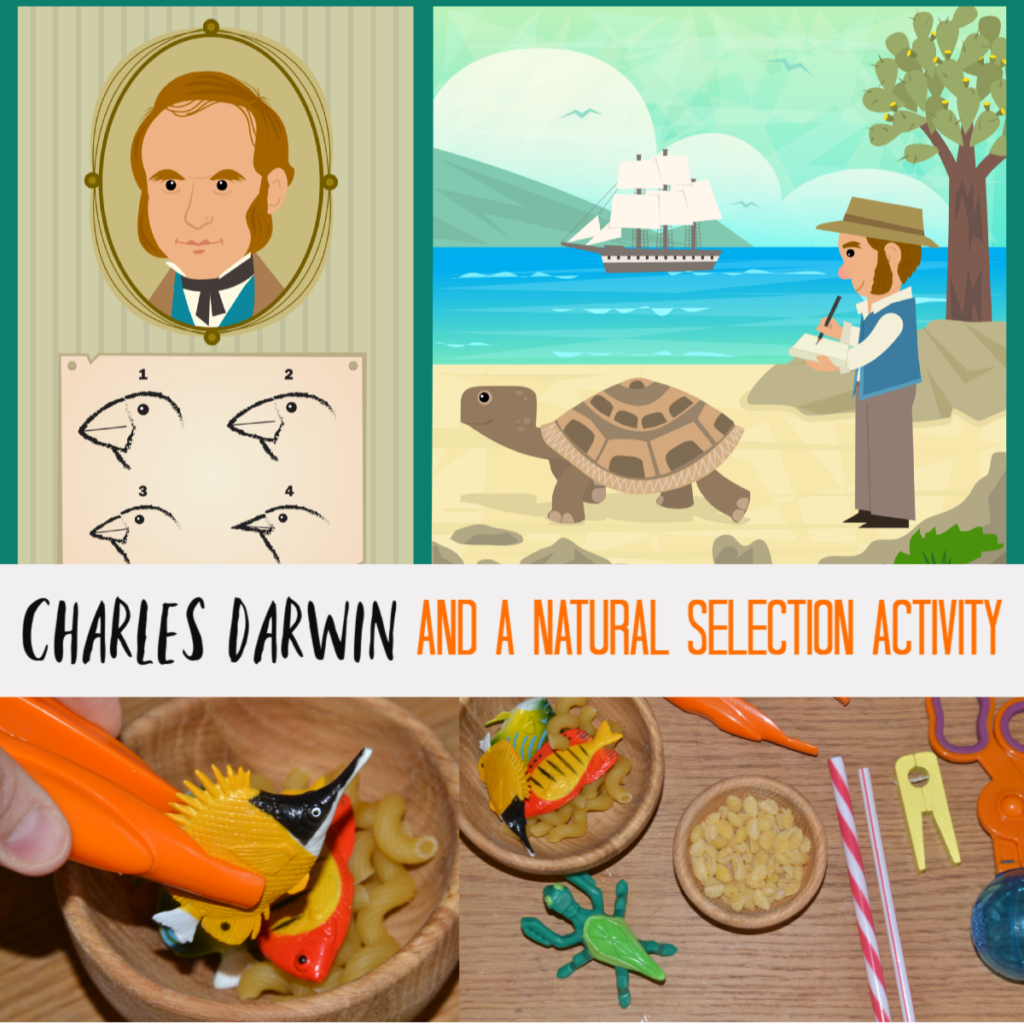
What is Charles Darwin famous for?
His 5 year around the world trip on HMS Beagle where he visited the Galapagos Islands and used the data and information he collected to develop his theory of evolution by natural selection.
Name of ship he travelled on: The HMS Beagle
Books published: The Origin of Species in 1859
The Origin of Species
The Origin of Species is Charles Darwin’s classic book which is one of the most important texts in history. The Origin of Species revolutionised the course of science and caused a huge amount of controversy when first published.
I always found The Origin of Species difficult to read, but my children just love this beautifully illustration version of Charles Darwin’s famous book.
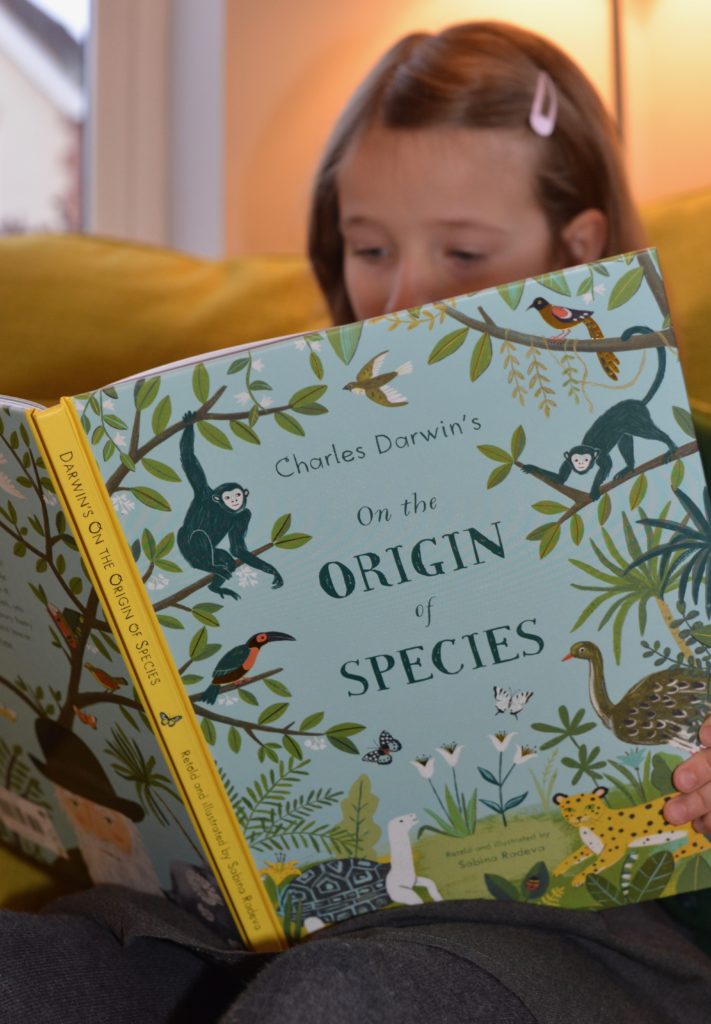
What is Natural Selection?
The theory behind Natural Selection is that characteristics more suited to an environment are more like to survive and pass those characteristics onto the next generation.
So if you compare yourself to someone else in the room you will notice that you may be taller or shorter than them.
If you became in competition for something…lets say food and it happens to be up on a tall shelf, the tallest person is more likely to get it. Now, we are quite a kind natured species and would often share but in nature it is every living thing for himself. The living creature that was smaller and could not reach the food is more likely to starve and not breed, leaving the very full taller creature to survive and pass on his or her tall genes!
Darwin found evidence of this on the Galapagos Islands.
Darwin’s Finches
Darwin found that finches (which are a species of bird) varied in different ways depending on which island they lived on. One of those differences was beak size.
It’s now thought that these birds were not actually finches but perhaps a blackbird of mockingbird.
Some finches had fat short beaks and some thinner sized beaks.
Charles Darwin found that the seeds available on the islands where the finches lived differed in size and that finch beaks had adapted to the size of seed available. He concluded that the finches beaks had evolved over time as favourable characteristics were passed down through generations of birds.
Finches with the fat shaped beaks would have struggled to survive on an island where the main food was small seeds but the thin beaked finches would have survived well and lived to pass on their genes.
On an island where mostly only larger seeds were available the opposite would have happened as a larger beak would have been a huge advantage.
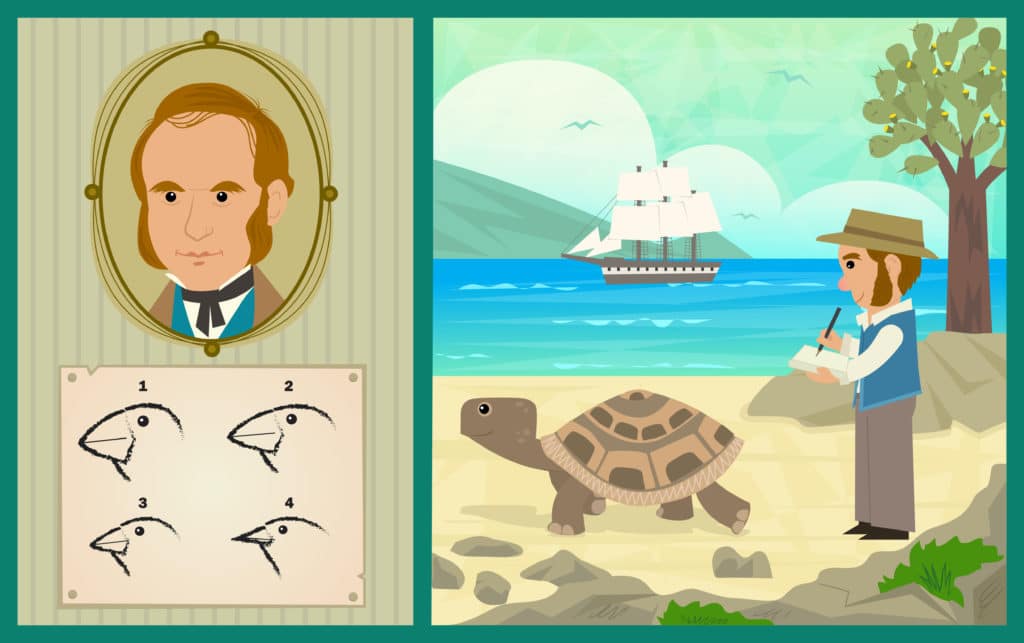
Natural Selection Activity
Why do birds have different shaped beaks?
You can find out for yourself why the size and shape of bird beaks is so important.
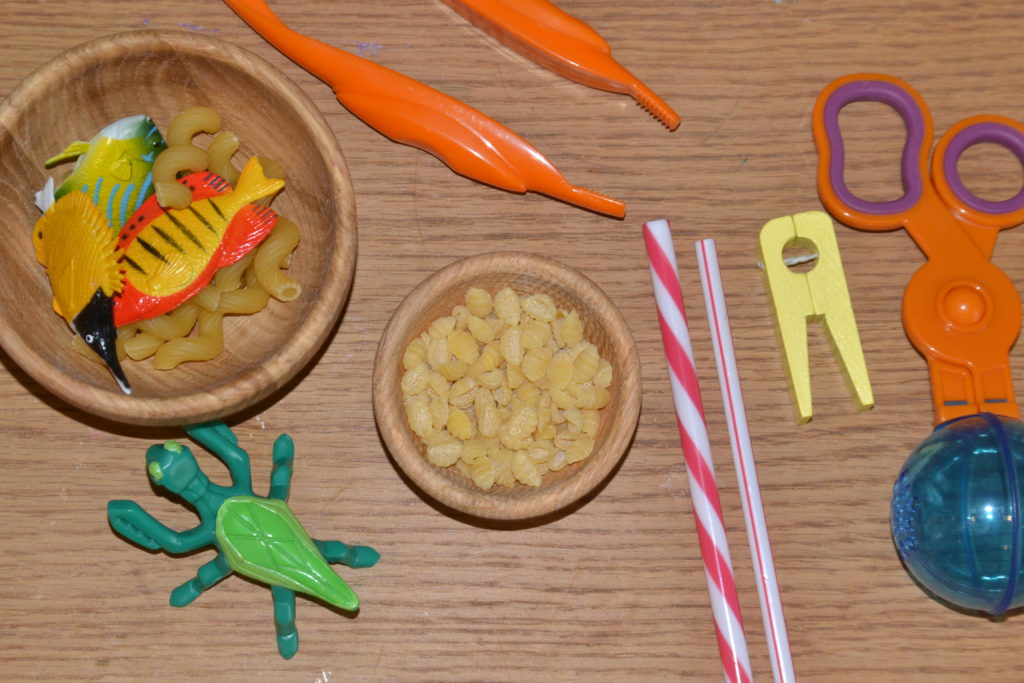
You will need
Three different sized seeds/beans or pasta – pumpkins seeds, sunflower seeds and flax seed are good choices. Small toy insects are also fun to try.
Two different sized pairs of tweezers or scoopers
Straws and pegs – optional
Stopwatch
Six pots
Instructions
1. Count 10 of each seed or pasta pieces into three of the pots
2. Decide which pair of tweezers you will use first.
3. Time yourself moving the seeds from the pots they are in to an empty pot. Repeat this with the same tweezers for each seed type.
4. Repeat again with the larger tweezers
5. Record your results
If you do this with a friend you can start racing each other and see who can move the seeds the fastest!
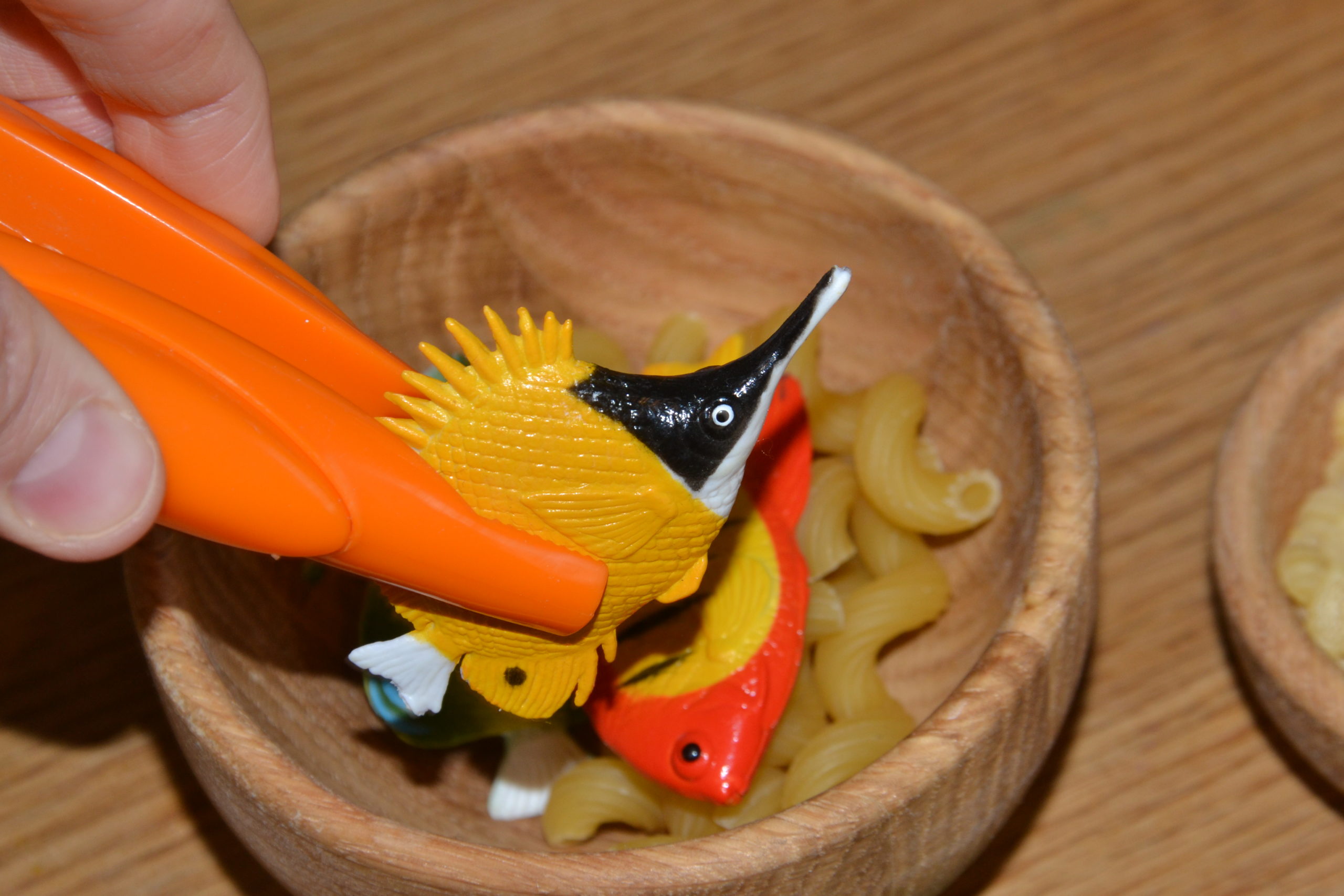
Conclusions and Questions
Which tweezers with which seed was the fastest?
Which tweezers were most suited to which seed type?
How could you ensure that your results were accurate?
Images from Flickr
Darwin – thanks to Lawrence OP
Finch – thanks to CFBSr’s
Last Updated on February 17, 2022 by Emma Vanstone



Wonderful post. A simple way to demonstrate natural selection.